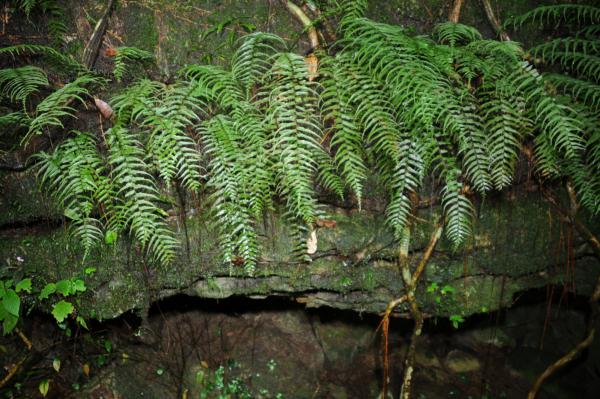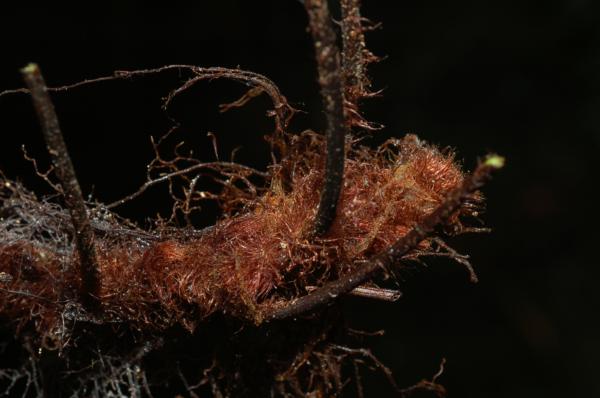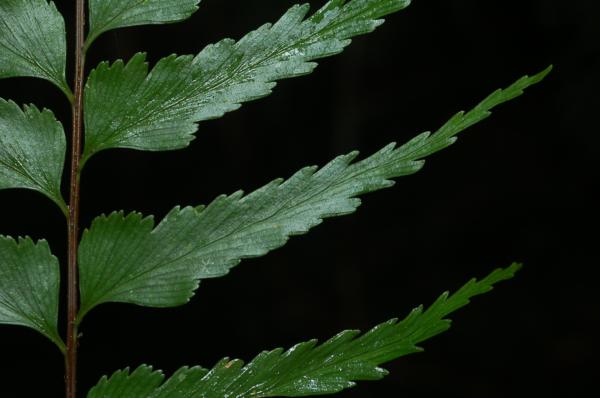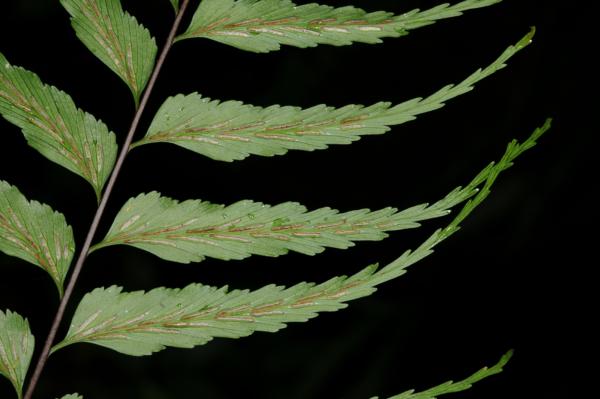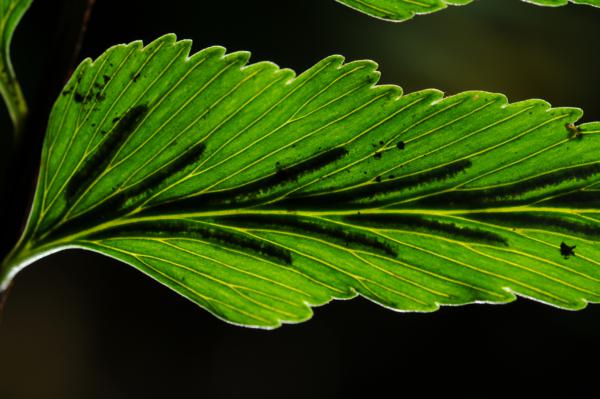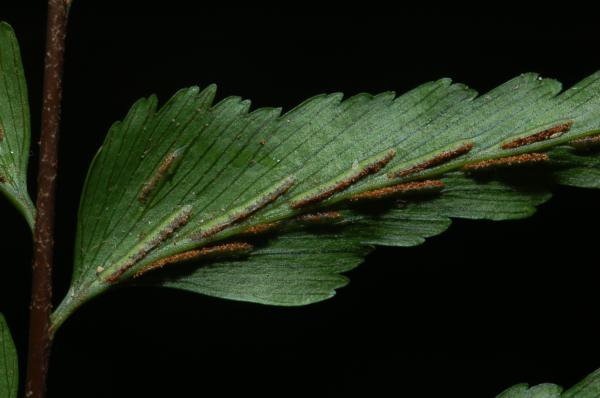
Asplenium contiguum Kaulf.
Family
Aspleniaceae
Nomenclature
Asplenium contiguum Kaulf., Enum. Filic. 172. 1824; Hooker & Arnott, Bot. Beechey Voy. 106. 1841; Brackenridge, U.S. Expl. Exped., Atlas Filic. 158. 1855; Hooker, Sp. Fil. (Hooker) 3: 156, t. CXCIV, f. 1. 1860; Palmer, Hawaii's Ferns and Fern Allies 57. 2003; Illustrated Flora of Ferns & Fern -Allies of South Pacific Islands 138, t. 49.5a & b. 2008. – Type: Hawaii, Oahu, Chamisso s.n., 1827 (P [P00642985]).
Asplenium filiforme Kaulf., Enum. Filic. 172. 1824; Hooker & Arnott, Bot. Beechey Voy. 106. 1841; Brackenridge, U.S. Expl. Exped., Atlas Filic. 158. 1855. – Asplenium contiguum var. filiforme (Kaulf.) Hook., Sp. Fil. (Hooker), 3: 156, t. CXCIV, f. 2 - 4. 1860. – Type: Hawaii, Oahu, Chamisso s.n. (n.v.).
Asplenium lepturus J.Sm. ex C.Presl, Epimel. Bot. 72. 1851; Tardieu & C.Chr., Fl. Indo-Chine 7(2): 223. 1940. – Asplenium contiguum var. lepturus (J.Sm. ex C.Presl) Hook., Sp. Fil. (Hooker), 3: 156, t. CXCIV, f. 5-7. 1860. – Type: Philippines, Luzon, Cuming 211, 1836-1841. (B [B200017192], BM (x2) [BM001045201, BM001045202], E [E00210804], MICH [MICH1190073], P [P00642967], PRC (n.v.), US [US00135099]).
Description
Epiphytic or lithophytic (occasionally terrestrial). Rhizomes long-creeping, 4–7 mm diam., densely covered with scales; scales, orange to dark brown, clathrate, c. 3.5–5.5 x 0.5–1.1 mm, basifixed, narrowly triangular with a hair-pointed apex (this often missing on older scales), margin entire, sometimes with a few small irregular projections. Fronds close, c. 0.5–2 cm apart, monomorphic, (30–)50–85(–136) cm long; stipes dull, dark brown to almost black, (12–)20–44 cm long, slightly sulcate above, subglabrous or covered with small glandular and eglandular hairs, scales only at base; lamina pinnate, oblong or narrowly ovate in outline (occasionally elliptic), (18–)30–60(–103) × (9–)12–20(–31) cm, lowermost pinnae hardly reduced, terminal part consisting of reduced pinnae merging into a pinnatifid caudate apex, subcoriaceous, mid to dark-green and slightly shiny above, hardly paler beneath, glabrous, 12–41 pairs of free pinnae, alternate, rarely subopposite; rachises subglabrous (rarely hairy), grooved above, same colour as stipes; pinnae with short green stalks less than 3 mm long, narrowly ovate and slightly falcate, longest pinnae in the bottom third of the lamina, longest pinnae (5–)7–13(–16.5) x (0.6–)0.8–1.6 cm, base asymmetrical with acroscopic side broadly cuneate to truncate and basiscopic side narrowly cuneate to very narrowly cuneate resulting in lamina appearing to be absent, apex caudate, margin irregularly incised and serrate, costa slightly raised beneath, slightly grooved above; veins prominent, free, forked once or more, almost parallel. Sori on acroscopic veins on both sides of costa, linear, 8–16 mm long, from very near costa to less than half way to margin, often almost parallel to costa; indusia linear, margin entire, glabrous .
Distribution in Laos
Salavan.
Wider Distribution
Laos, Vietnam, China (Hainan), Philippines, Vanuatu, Hawaii.
Ecology
Usually epiphytic but occasionally terrestrial in evergreen forest.
Similar species
Asplenium polyodon G.Forst.
Proposed IUCN Conservation Assessment
Least Concern (LC). This species is widespread and not under any known threats.
Notes
Similar to Asplenium polyodon G.Forst. but differing particularly in the much longer rhizome and the narrower pinnae .
Habit
Rhizome
Upper surface of pinnae
Undersurface of pinnae
Venation
Sori
Site hosted by the Royal Botanic Garden Edinburgh. Content managed by Stuart Lindsay, Gardens by the Bay, Singapore and David Middleton, Singapore Botanic Gardens. Last updated 24 January 2012
